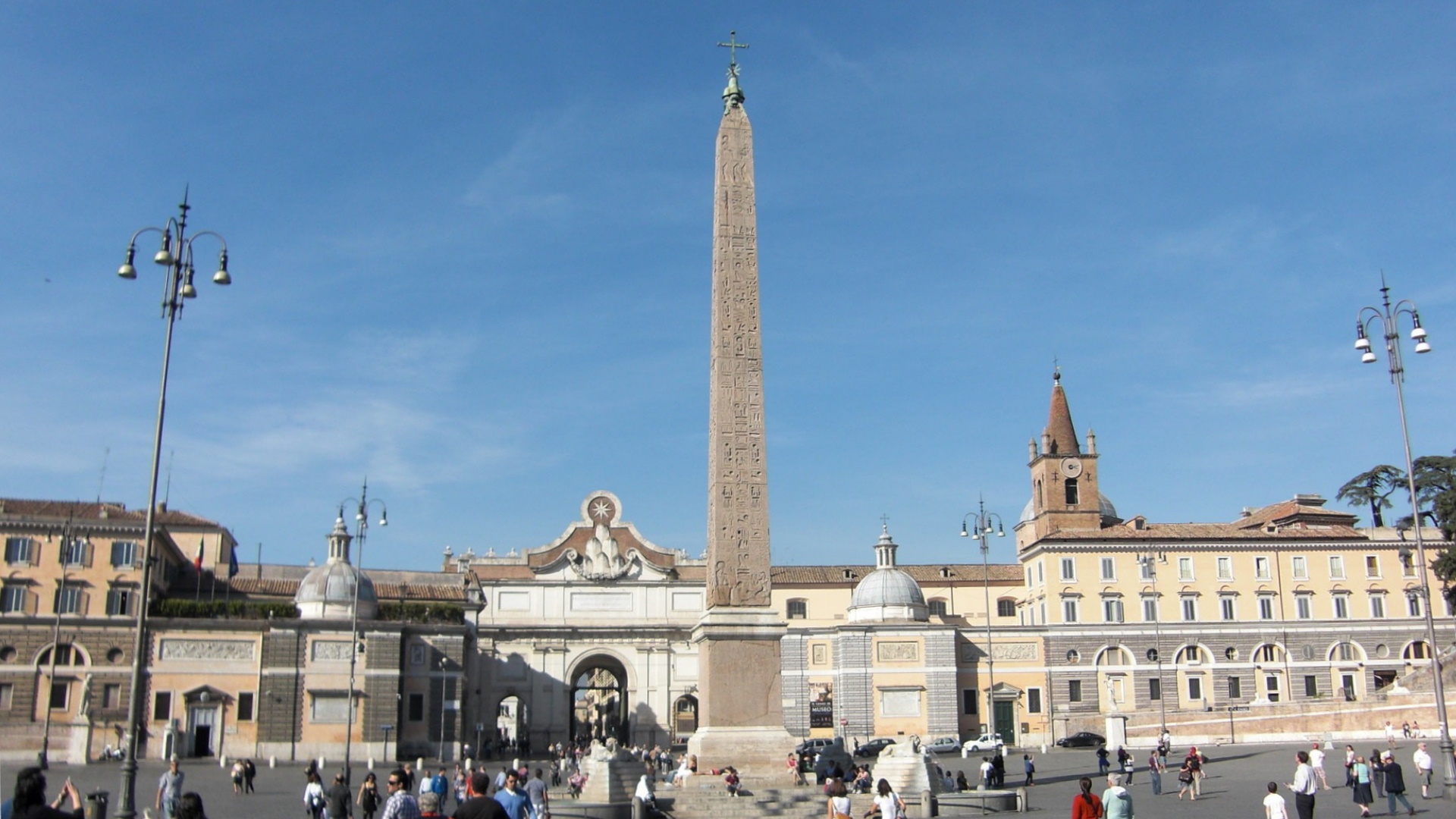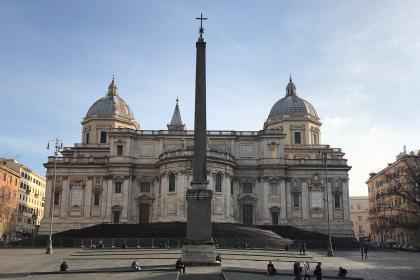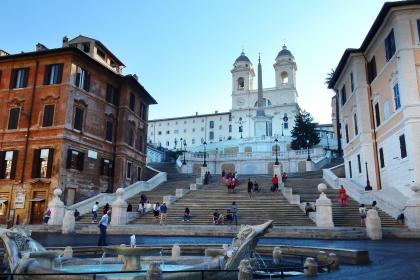
Rome is the city with the most obelisks in the world. Obelisks of Egyptian manufacture arrived in Rome from the time of Augustus when Egypt was under Roman control. In the Pharaonic era, the obelisks were considered solar symbols, were placed in front of the temples' entrance, and enriched with commemorative engravings. For the Romans, the gigantic basalt stelae acquired symbolic significance as spoils of war and testimony of imperial strength. The obelisks of Roman manufacture imitating the Egyptian ones, however, were made in the Domitian era.
Subject to collapse and burial, they were found during some excavations and were raised in strategic points of the city to highlight the new urban layout.
We propose you an itinerary to discover the most significant obelisks of Rome starting from the Pincio, whose obelisk measures 9,247 meters; with the base and the star, it exceeds, instead, the 17 meters. Built by Emperor Hadrian, it was found near the Basilica of Santa Croce in Gerusalemme, near the Aurelian walls; hence the name of Aurelian Obelisk. In 1822, Pope Pius VII had it placed in the gardens of the Pincio.
After a short walk along Viale Trinità dei Monti, we meet the Sallustian Obelisk. It measures 13.91 meters and, with the base, 30.45 meters. It was built in the Imperial era; the stonemasons who executed the hieroglyphs, copying them from Egyptian originals, inverted some signs. Today, you can admire it at the top of the staircase that goes up from Piazza di Spagna, where, in 1789, Pope Pius VI placed it.
The third stage of our tour is Piazza del Popolo. In the center stands the Flaminio Obelisk, original Egyptian stele 24 meters high. Built in the 13th century BC, it was transported to Rome by Augustus in 10 BC. Its original seat was in the Circus Maximus; moving it to Piazza del Popolo, the place from which the three streets of the Trident branch, was a decision of Pope Sixtus V.
For the next destination, Piazza di Monte Citorio, we take Via di Ripetta to reach, after admiring the Ara Pacis, the Campense Obelisk, in front of the Parliament. Original Egyptian and over 21 meters high, it arrived in Rome in the Augustan era. In the beginning, it was in Campo Marzio, where it acted as a gnomon for an enormous sundial of which a fragment is still visible in the foundations of San Lorenzo in Lucina. The obelisk collapsed due to a fire; Pius VI had it raised in its present location in 1792.
A few hundred meters and we are in Piazza della Rotonda. In front of the Pantheon, you can admire the Macuteo Obelisk, an Egyptian obelisk 6.34 meters high that reaches 14.52 meters with the base and the cross. Emperor Domitian had it transported to Rome to decorate the temple dedicated to Isis and Serapis in Campo Marzio, where it was found in 1373. In 1711, Pope Clement XI placed him in the current position on the fountain by Giacomo Della Porta.
In Piazza della Minerva, just behind the Pantheon, is the city’s tiniest Egyptian obelisk, the Minerveo Obelisk. Just 5.47 meters high, with its base, the elephant, and the cross, it reaches 12 meters. Dating back to the 6th century BC, it was erected in front of the church of Santa Maria sopra Minerva at the behest of Pope Alexander VII in 1667. Gian Lorenzo Bernini took care of the set-up by placing the stele on the elephant and on the base he created.
In the center of Piazza Navona is the Agonale Obelisk. Dating back to the time of Emperor Domitian, it is 16.53 meters high. Initially located in Albano, in 311, Maxentius wanted it for his villa on the Appian Way. It was not until 1651, during the pontificate of Pope Innocent X, that Bernini placed it over the Fountain of the Four Rivers.
In St Peter’s Square, we can admire the Vatican Obelisk. Of Egyptian origin, it is 25.5 meters high and reaches, with the base and the cross, 40 meters. It has no engraved hieroglyph and is the only obelisk ever left standing. Brought to Rome by Caligula in 37 B.C. to embellish the Circus of Nero, it was located near the Basilica sacristy. In 1586, it was raised in the center of the square by Sixtus V.
The next destination is Santa Maria Maggiore. In front of the apse of the basilica stands the Esquiline Obelisk of Roman execution. It is more than 14 meters high, with the base and the cross, 25,53 meters. Built by Diocletian, it was at the entrance to the Mausoleum of Augustus, together with his twin Quirinal Obelisk. Found in 1527, Pope Sixtus V had it raised in the current seat by Domenico Fontana in 1587.
Via Merulana separates us from our last stage: Piazza di San Giovanni in Laterano. The Lateran Obelisk, of Egyptian manufacture, is the world's highest monolithic obelisk: it rises for 32.18 meters. Built in the 15th century B.C., it is also the oldest in Rome. It arrived in the city in 357 at the behest of Emperor Constantius II and stood initially in the Circus Maximus, where the Flaminian Obelisk already was. It remained buried until 1587 when it was found in three pieces. In 1588, it moved to Piazza San Giovanni in Laterano, in front of the rear entrance of the Cathedral of Rome.
Esquiline Obelisk

 Condividi
Condividi
Sallustian Obelisk

 Condividi
Condividi











































